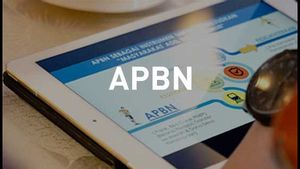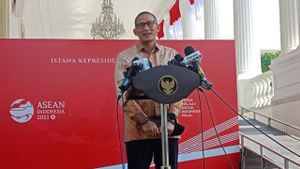YOGYKARTA Some taxpayers may not yet know what tax shrinkage is in taxation activities. Originally, information about tax insulation must be understood by every taxpayer in managing financial reports. This is because one of the costs used to reduce income tax is the cost of shrinking.
Each taxpayer can calculate the shrinkage that must be adjusted to the standard commercial account. However, if it is done on the SPT (Notification Letter) reporting, the taxpayer must first carry out a fiscal shrinkage.
If a difference is found at the time of calculating the cost of shrinking, the taxpayer needs to carry out fiscal reconciliation.
That is why taxpayers need to understand the concept of tax shrinkage regulated in tax laws and regulations.
Broadly speaking, tax shrinkage is an accumulation of costs that will be diverted as fixed assets within a certain period of time.
Penyusutan dalam aktivitas perpajakan juga dapat difinisikan sebagai alokasi biaya dari aktivta berwujud menjadi beban selama masa pemanfaatannya.
For example, factory buildings, production machines, and work equipment including expenses during the time the benefits of the assets are still related. These variables become a burden because they affect net profit.
Based on the above parables, the shrinking in taxation activities occurs on the expenditure for purchase, establishment, addition, to improvement or change of tangible property.
In addition, shrinking can also be done on materials other than buildings. The variables that are excluded in tax shrinkage are land that has the status of property, building or business use rights, and rights that have a benefit period of more than one year.
The shrinkage begins in the month of expenditure, but if it occurs in assets that are still in the process of being worked on, then the shrinkage can only be carried out in the month of completion of the work on these assets.
Tax Shrink Calculation Method
In the Income Tax Law (UU PPh) it is stated that every expenditure to obtain tangible assets, which has a term of benefit of more than one year, can be deducted from gross income through a shrinkage mechanism.
This intangible property shrinkage mechanism is initiated in Article 11 of Law Number 7 of 1983 concerning Income Tax.
In the law, there are two methods of realignment shrinkage, another antsara:
Regarding tangible assets in the form of buildings, it can only be traced by a straight line method. Assets that are tangible other than buildings, can also be traced through a straight line method or decreased balance.
SEE ALSO:
Tax Shrink Tariff
Calculation of the shrinkage of tangible assets must refer to the period of benefit and shrinkage rates
Quoted from the website of the Directorate General of Taxes, here is the shrinking tariff table for calculating the shrinkage of tangible assets.
Asset Group Realizes
Benefit Period
Gris Tariff-Metode Is Straight
Saldo Tariff-Methode Decreases
I. Not a building
Group 1
4 years
25 percent
50 percent
Group 2
8 years
12.5 percent
25 percent
Group 3
16 years
6.25 percent
12.5 percent
Group 4
20 taahun
5 percent
10 percent
II. Building
Not permanent
10 years
10 percent
-
Permanent
20 years
5 percent
-
That's the information about what tax shrinkage is. Hopefully this article can add insight to the loyal readers of VOI.ID.
The English, Chinese, Japanese, Arabic, and French versions are automatically generated by the AI. So there may still be inaccuracies in translating, please always see Indonesian as our main language. (system supported by DigitalSiber.id)
















